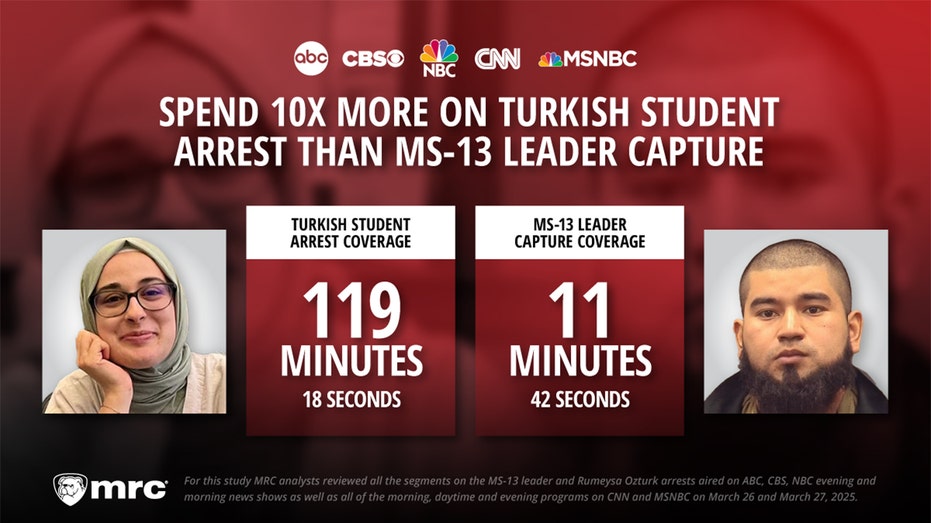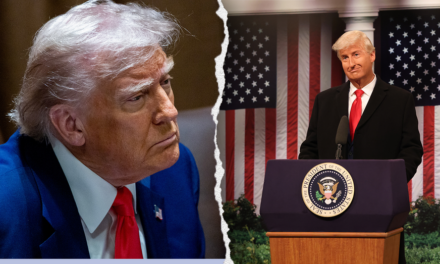A recent study has revealed a startling disparity in media coverage between the arrest of a student from Tufts University and that of a leader from the notorious MS-13 gang. The findings indicate that the story of the Tufts student garnered ten times more attention from traditional news outlets than the high-profile arrest of the gang leader, which raises questions about the nature of news prioritization and the framing of narratives in the media landscape.
The Tufts University incident, which occurred in a relatively quiet suburban community, has been portrayed as a sensational story, leading to extensive reporting across a wide array of platforms, including newspapers, television, and online news websites. In contrast, the arrest of the MS-13 gang leader, although linked to blatant criminal activity and organized crime that poses a significant threat to public safety, received markedly less coverage.
This study sheds light on a broader phenomenon observed in media practices. Despite the severity and implications of gang violence—especially from groups like MS-13, known for their brutal methods and criminal operations—the media appears to dedicate more resources and attention to incidents that resonate with their audience on a personal or educational level.
To understand this coverage discrepancy, it is essential to delve into the specifics surrounding the arrest of the Tufts student. Sources indicate that the student was arrested following an incident that involved drug-related charges. Details surrounding the individual’s background—being a member of the university community, with an engaging story of academic aspirations—played a large role in attracting media coverage. Such narratives resonate more closely with audiences who may identify as students, parents, or community members, potentially creating a more compelling story than that of a gang leader.
On the other hand, the MS-13 gang leader’s criminal activities, though unquestionably severe, tend to perpetuate existing narratives surrounding gang violence that may be more familiar and, unfortunately, largely desensitized for audiences. The public’s perception of these kinds of stories is often shaped by broader societal understandings and fears about crime, policing, and community safety. As a result, they might not evoke the same level of urgency or concern as a story rooted in academia.
This disparity raises critical ethical questions regarding the responsibility of the media to present a balanced perspective on crime. Is sensationalism winning over the sober reporting of serious social issues? Is there an inherent bias towards stories that are deemed more palatable or relatable to the average reader, whilst overshadowing those that might be less understood or provoke fear?
The consequences of this media focus can ripple through public consciousness. When certain stories are amplified, it shapes how communities perceive crime and the issues connected to it. Higher coverage of “local” university incidents may lead to a skewed perception of safety, perhaps cultivating an illusion that crime is more prevalent within academic institutions than in communities plagued by gang violence.
Furthermore, this disparity in coverage can hinder efforts to address underlying societal problems associated with gang violence. MS-13, a transnational gang with roots in Central America, represents complex issues such as immigration, socio-economic disparity, and systemic violence. When stories about these crimes fade from the headlines, comprehensive discussions about their root causes become less frequent, depriving the public of insight into critical issues that warrant attention.
In analyzing media priorities, it’s worthwhile to consider how these narratives impact funding and policy-making as well. Policymakers often rely on media coverage to gauge public concerns, with the expectation that issues highlighted in the news are those which require intervention. Should the media continue prioritizing certain types of crime, public funding for addressing more complex crime-related issues—including those involving gang violence—may suffer as a result.
The disparity in coverage between these two incidents also highlights a deeper issue within the media ecosystem, wherein larger, institutional news organizations tend to prioritize narratives that are sensational, gripping, and impactful to their audience’s immediate reality. Researchers have long pointed to a move towards more entertainment-oriented news, where audience engagement can overshadow rigorous reporting and in-depth analysis of societal issues.
As society increasingly grapples with questions around crime and violence in all forms, it becomes essential for journalists and media outlets to reflect on the implications of their reporting choices. How can news organizations balance the need for compelling storytelling with an ethical obligation to inform the public about pressing issues that may not be as popular or engaging?
The differences in coverage between the Tufts University student’s arrest and the MS-13 leader’s apprehension underline the complex interplay between media, society, and crime. Moving forward, it is crucial for journalists to engage in self-reflection and strive for a representation of crime that not only informs but empowers the public to understand and confront the multifaceted nature of criminality in every form.
Ultimately, the ongoing conversation about media ethics, the prioritization of stories, and the potential effects of coverage on public perceptions of crime may help push for more balanced reporting that reflects the severity of various issues—allowing communities to engage with the realities of crime, rather than sensationalized narratives that may mislead public perception and policy.
The coverage gap seen in this analysis is not just a matter of news worthiness; it poses questions of equity and representation within the media landscape. As discussions around crime continue to evolve, the challenge remains for the media to rise above sensationalism and focus on comprehensive storytelling that addresses the full scope of crime, its impacts, and the potential paths toward solutions.
In the battle for media attention and the shaping of public discourse around crime, it is increasingly clear that a greater commitment to diverse representations and responsible reporting is vital to foster a well-informed public capable of understanding and addressing the challenges posed by crime in modern society.
This exploration into media coverage highlights the importance of accountability and integrity in journalism—hallmarks that should guide reporting practices and aspirations moving forward.
































